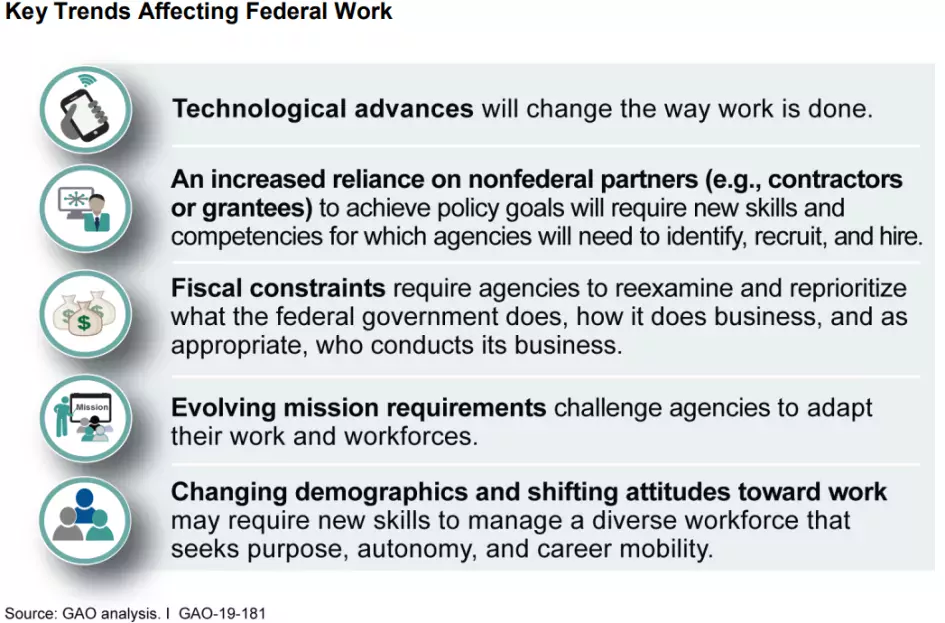The Future of the Federal Workforce
For Public Service Recognition Week, we’re celebrating the valuable contributions federal employees—including our GAO colleagues—provide to our country every day.
This week is also a good time to think about how the government can manage its workforce in the future. Read on and listen to our podcast with Robert Goldenkoff, a director in our Strategic Issues team, to learn about our recent work in this area.
Keeping up with changes in the federal workforce
Federal employment policies were designed generations ago for a workforce and type of work that largely no longer exists. As a result, the government may struggle to compete for talented workers with the skills needed to address the nation’s social, economic, and security challenges. That’s one reason why federal human capital management has been on GAO’s High Risk List since 2001.
And this is not an isolated issue. In fact, talent management plays a role in 16 of our 35 high-risk areas. For example, difficulties recruiting and retaining skilled workers affects the government’s cybersecurity efforts and the quality of health care for our nation’s veterans.
In a recent report, we identified key trends affecting federal work and talent management strategies for attracting and keeping skilled workers
Trends affecting federal work
Technology, demographics, and attitudes toward work are evolving. These and other trends are affecting how federal work is done and, consequently, the skills and competencies that workers need to accomplish agency missions.
Strategies for attracting and keeping talent
Collectively, the talent management strategies we identified provide a helpful reminder of steps agencies can take to attract the best employees to help fulfill agency missions. In other words, preparing for the future workforce isn’t about revolutionary approaches; instead, it’s about focused attention to leadership, culture, and sound management practices. For instance, agencies can attract and keep talented workers by:
- Offering work/life balance such as flexible scheduling,
- Offering development opportunities,
- Linking employees’ daily activities to the agency’s mission, and
- Recruiting graduating students earlier in the school year.
Public Service from the Investigative Arm of Congress
Here at GAO about 3,000 public servants work at headquarters and 11 field offices spread across the country. We’re proud that our work produced $75.1 billion in measurable financial benefits to the nation in fiscal year 2018. That amounts to a return of about $124 for every dollar invested in GAO. We also identified 1,294 other benefits that led to program and operational improvements across the government. Want to know more? Check out our key issues pages on human capital, including those on Best Practices.
Comments on GAO’s WatchBlog? Contact blog@gao.gov.
GAO Contacts
Related Products

GAO's mission is to provide Congress with fact-based, nonpartisan information that can help improve federal government performance and ensure accountability for the benefit of the American people. GAO launched its WatchBlog in January, 2014, as part of its continuing effort to reach its audiences—Congress and the American people—where they are currently looking for information.
The blog format allows GAO to provide a little more context about its work than it can offer on its other social media platforms. Posts will tie GAO work to current events and the news; show how GAO’s work is affecting agencies or legislation; highlight reports, testimonies, and issue areas where GAO does work; and provide information about GAO itself, among other things.
Please send any feedback on GAO's WatchBlog to blog@gao.gov.







